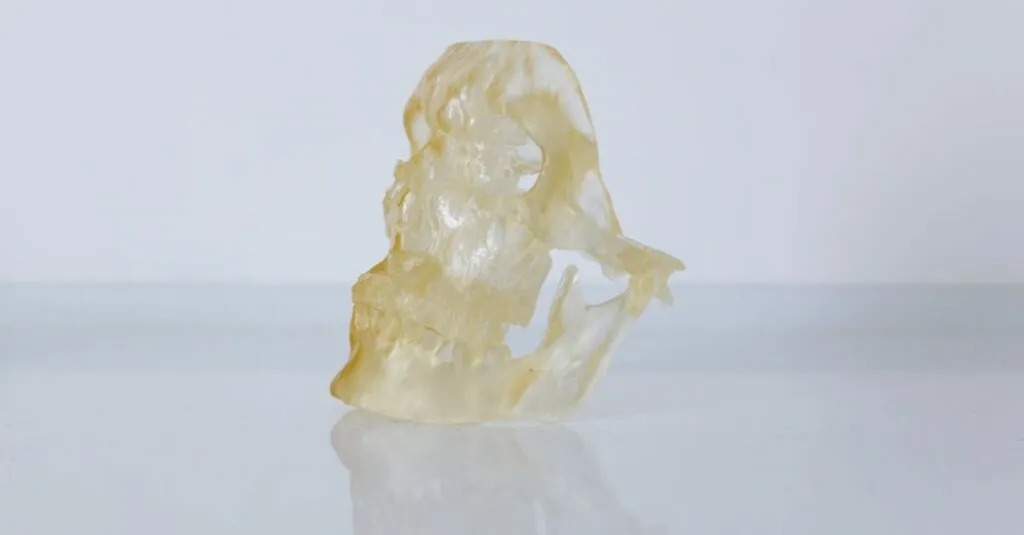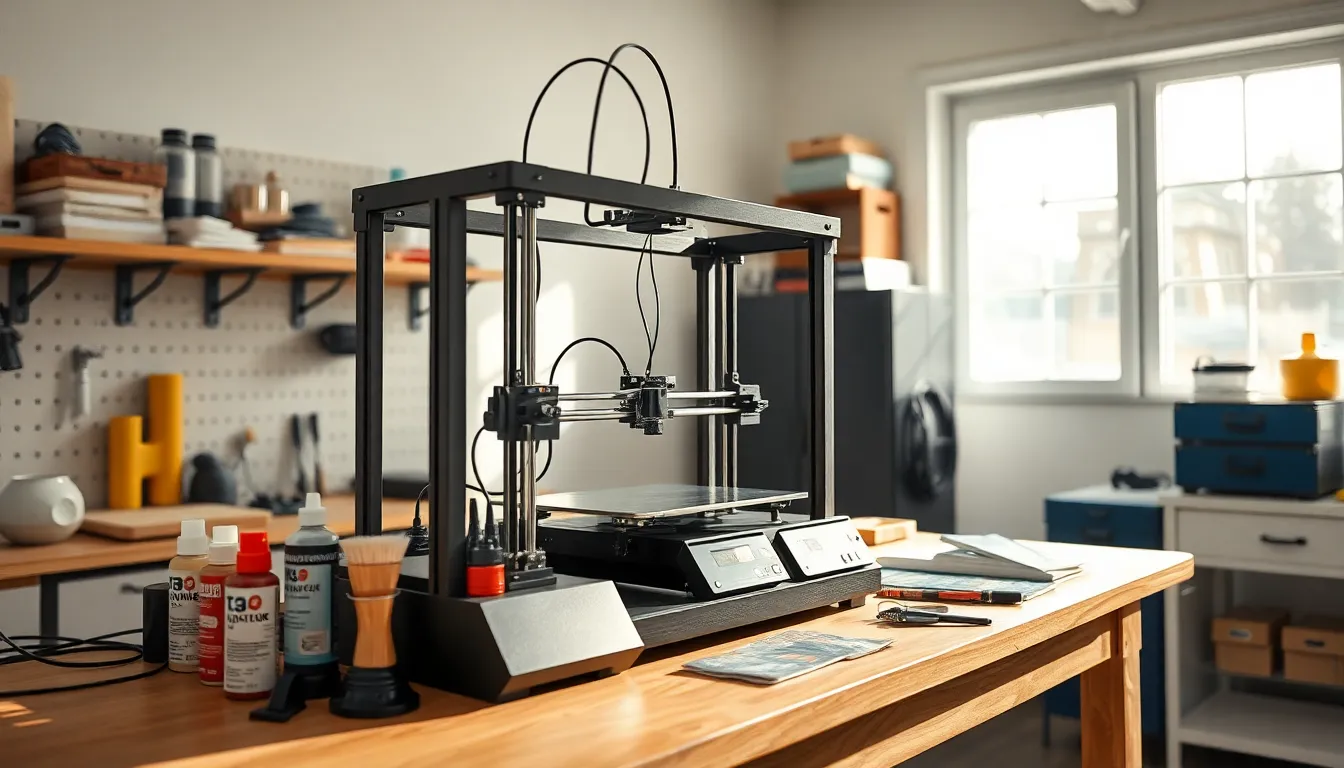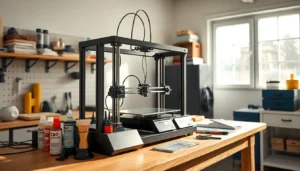In the world of resin printing, UV light sources are the unsung heroes, turning gooey resin into stunning masterpieces. Imagine a magical wand that transforms a puddle of liquid into intricate designs, all with the flick of a switch. Sounds like sorcery, right? Well, it’s just good old science at work.
Table of Contents
ToggleOverview of UV Light Sources for Resin Printing
UV light sources play a vital role in resin printing. They initiate the polymerization process that solidifies liquid resin. Various types of UV light sources exist, each catering to different printing needs.
LED lights are popular for their efficiency and longevity. They emit UV light in a specific wavelength range, often around 405 nm, which is effective for most resins. Many users prefer LED options due to their low energy consumption and minimal heat output.
Another option includes traditional UV lamps. These lamps, usually mercury vapor or metal halide, emit broader UV light spectra. While effective, they produce more heat and consume more energy than LEDs.
Some advanced printers incorporate DLP technology. DLP printers use digital light processing to project images onto the resin surface. This method allows for faster layer curing and detailed prints.
Laser-based systems utilize UV lasers to cure resin with precision. These systems provide high accuracy and are suitable for professional applications. However, they often come at a higher cost than other options.
Choosing the right UV light source is essential for achieving optimal results. Factors to consider include the type of resin, expected print resolution, and production speed. Understanding these elements ensures a successful printing experience.
Types of UV Light Sources
UV light sources play a vital role in resin printing, influencing quality and efficiency. Each type serves specific needs and has distinct advantages.
LED UV Light Sources
LED UV light sources are favored for their efficiency and low heat output. Many printers utilize them due to their long lifespan, which can exceed 20,000 hours. Energy consumption remains low, making these sources cost-effective. Fast curing times enhance productivity, allowing multiple prints in a short period. They emit a specific wavelength effective for many resins, ensuring optimal polymerization. Their compact form fits well into various printer designs, promoting versatility in usage.
Laser UV Light Sources
Laser UV light sources provide precision in resin printing. Capable of achieving high detail, these systems excel in professional applications where accuracy is paramount. Different wavelengths cater to specific resin types, allowing for customized setups. Limited heat generation ensures minimal distortion during the curing process. As a result, prints showcase finer features and complex geometries. These systems often come at a higher initial investment but deliver exceptional quality, making them ideal for detailed projects.
Benefits of Using UV Light in Resin Printing
UV light significantly enhances the resin printing process. It transforms liquid resin into solid models efficiently and effectively.
Faster Curing Times
Faster curing times contribute to streamlined workflows. UV light sources cure resin almost instantly, allowing for rapid layering and quick turnarounds on projects. As a result, print sessions can complete in minutes rather than hours. This efficiency provides a workspace that accommodates more prints over a shorter timeframe, optimizing productivity. Many users report a significant decrease in overall print times when employing effective UV sources.
Improved Print Quality
Improved print quality stems from precise curing and curing depth control. With UV light, the polymerization process occurs uniformly, minimizing defects and ensuring better layer adhesion. Enhanced resolution and detail result from the ability of UV sources to target specific wavelengths. This precision leads to sharper edges and more intricate designs, addressing the demands of detailed projects. Additionally, consistent curing reduces issues like warping and surface imperfections, which further elevates the final product quality.
Choosing the Right UV Light Source
Selecting an appropriate UV light source is essential for effective resin printing. Factors such as resin type, printing speed, and desired print resolution significantly influence the decision.
Factors to Consider
Consider the resin’s specific requirements, as different materials have varied curing needs. Compatibility with common wavelengths enhances polymerization efficiency. Evaluate print volume and production speed, as high-output settings are ideal for larger projects. Print resolution often dictates the precision needed, where laser systems excel in detail-oriented tasks. Additionally, assess the heat output of the UV source; low heat options help maintain resin integrity over extended durations.
Cost vs. Performance
Analyze the trade-off between initial investment and performance quality. LED sources, while cost-effective, deliver efficient energy use and longevity, often totaling over 20,000 hours. Laser systems demand higher upfront costs but provide unrivaled accuracy and detail, justifying the expense for specialized applications. Users must also consider the ongoing energy consumption associated with each type, as this can impact total operating costs. Striking the right balance between budget constraints and desired output quality ultimately guides effective purchasing decisions.
Conclusion
Selecting the right UV light source is essential for achieving optimal results in resin printing. Each type offers unique advantages that cater to different needs and applications. LED sources stand out for their efficiency and longevity while laser systems excel in precision and detail.
Understanding the specific requirements of resin types and desired print resolutions helps users make informed decisions. By balancing cost and performance, it’s possible to enhance print quality and streamline workflows. As technology advances, UV light sources will continue to play a pivotal role in elevating the art of resin printing, making it an exciting field for both hobbyists and professionals alike.










